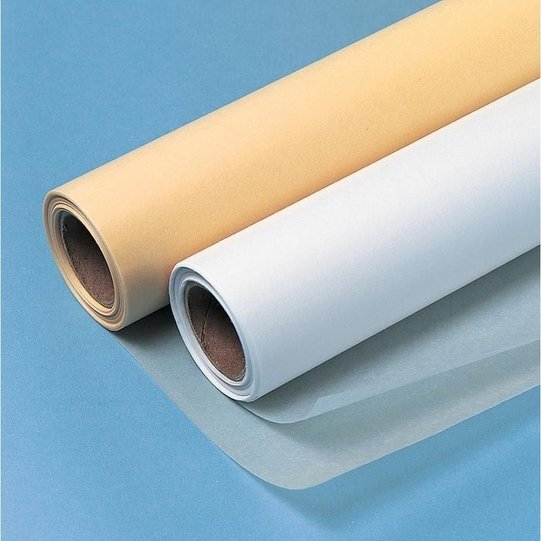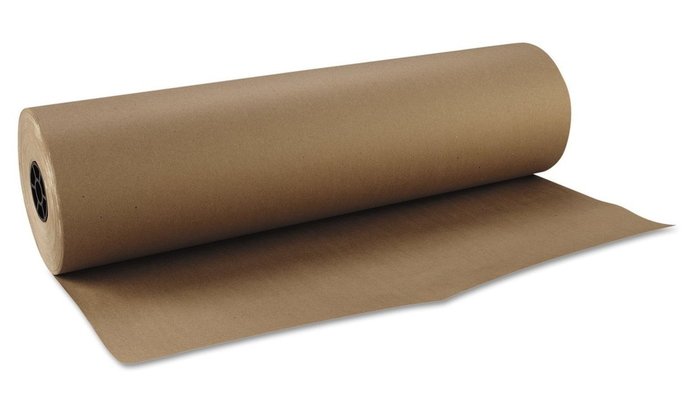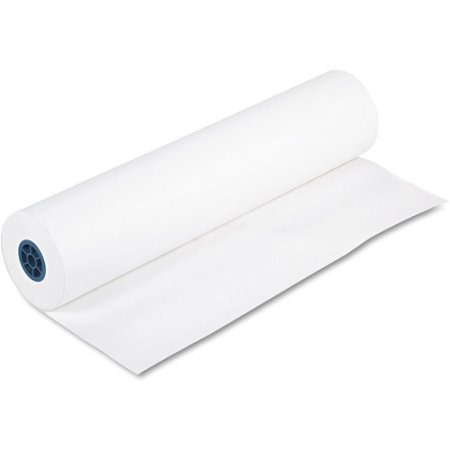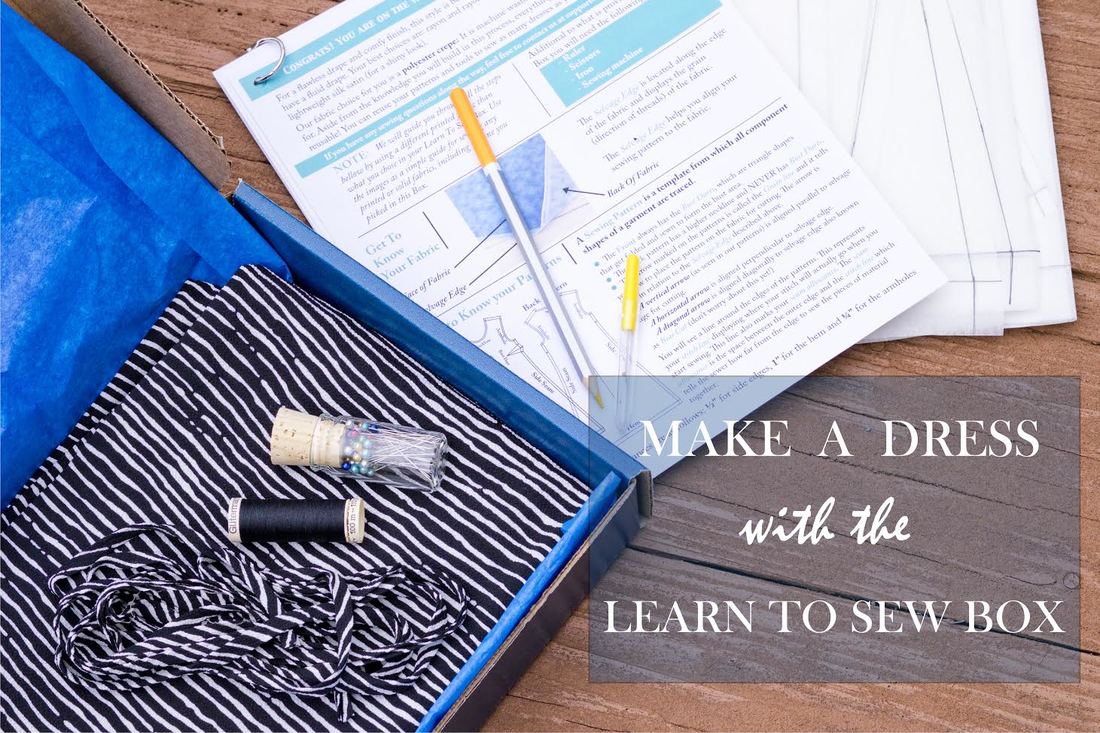|
If you are ready to take it to the next level in your sewing journey, then you are most likely ready to make your own sewing patterns! Using store-bought patterns is great in the learning process but being able to build and manipulate your own sewing patterns gives you unlimited design opportunities and can be so gratifying. Professional marked pattern paper is the best to use but lets face it, sewing is an expensive hobby. Good quality fabrics, practice muslin, trims and findings, and all the necessary tools can add up to a pretty penny. If you're just learning how to sew it can start to put a dent in your bank account. Pattern paper, just like fabric, is one of the items that needs constant replenishing, which is why cutting some corners and getting a bit creative can help you find replacements that work just well but cost much less. We've discussed some sewing hacks in our previous blog and now it's time to talk about pattern paper hacks- An equally important part of the sewing process! The pattern paper used in the fashion/clothing manufacturing industry is numbered-dotted white paper. It facilitates pattern making by offering pre-marked points and numbers at 1" increments. Although the markings will save you some effort and make the patterning process much faster, if you have an 18" marked plastic ruler you can easily create patterns without the need of these pattern markings. In addition, marked pattern paper is not easy to find in local sewing/craft stores so you have to turn to online shopping to get your hands on it. Note: If you are starting to make your own patterns, these three tools are a must have: an 18" marked clear ruler, a mechanical pencil, and a simple unmarked french curve. As mentioned above, you don't have to use professional pre-marked pattern paper if you can't find it or afford it. However, pattern paper should have the following necessary characteristics to function best: -Be Flexible: Easy to handle, be folded without forming deep creases, and bend without ripping when pinned. -Be durable: It shouldn't rip easily when handled or pinned. -Not too thick (unless you are using it on slopers) -Easy to pin: The pins should go through easily without too much damage to the paper. If you are looking for a cheaper, easier-to-find replacement for professional pattern paper, all the characteristics listed above should be taken in consideration. Here are the three substitutes for professional pattern paper that you can easily find at your local crafts/arts/shipping stores. The best part is, they wont break the bank! Parchment Tracing Paper (Roll) One of the best substitutes for dotted pattern paper, parchment tracing paper is very similar to the paper used on store-bought sewing patterns. It has a transparent characteristic that makes it easy to trace and transfer pattern markings. It is thin and flexible but strong enough to withstand pinning and handling. It can be folded easily without creating deep, harsh creases and once folded, it takes up very little space. Parchment paper is also easy to mark on with a pencil or any writing utensil of your choice. Of course, the best one to get is in a larger roll. The most commonly available are 24"-36" rolls at your local art/craft stores, office and home improvement stores- chances are, you'll love working with it! Wrapping/Shipping Paper Although it doesn't have a transparent quality and is not as thin as parchment paper, shipping/wrapping paper has the flexibility and durability necessary to work well as pattern paper. The most common is the ivory/brown colored version you've definitely come across when buying glass-wear or receiving delicate shipments. It is so commonly used for wrapping and shipping that there is a probability you have some hiding in your house as we speak. Although you could reuse the pieces you already have, we recommended you buy a fresh roll so that you're working on a clean, wrinkle-free surface. This thicker wrapping paper is easy to mark on, pin and fold without creating too much damage to the paper. You should be able to purchase it at any local home improvement store, shipping and even some craft stores. All Purpose White Paper Roll All purpose white paper, used often for making lightweight banners or photo backdrops is thicker and a bit heavier than the options described above. It is best used on sewing patterns for thicker, heavier-weight fabrics, although you could make it work on lighter fabrics with a little bit of effort. It has very slight transparency (for transferring and tracing pattern markings), good durability and it is fairly easy to pin. It has good flexibility although it works best if stored by being rolled as opposed to folded- it creases a bit more than regular pattern paper. That being said, it makes for a stable, easy to work with pattern paper and it is commonly found at any art and crafts store.
3 Comments
Lynn Chatsworth
1/24/2021 02:03:03 pm
Somewhat helpful. Thanks.
Reply
Rowan Morgan
12/13/2022 01:59:30 am
This was really helpful. I was having a difficult time tracking down exactly this information at more traditional sewing supply stores. Thanks
Reply
Leave a Reply. |
The Blog:A journey into our design process, sewing tutorials, fashion tips, and all the inspiring people and things we love. Doina AlexeiDesigner by trade and dressmaker at heart. I spend most of my days obsessing over new fabrics and daydreaming new ideas. Sadie
Executive Assistant & Client Relations Manager Archives
November 2019
Categories
All
|
-
Sewing Tutorials
-
Basics
>
- Aligning Pattern Grainlines To Fabric
- Preparing Fabrics For Sewing
- Pinning Sewing Patterns To Fabric
- Placing Sewing Patterns On Fabric For Cutting
- Rotary Cutters or Fabric Scissors?
- Cutting The Sewing Patterns
- What Are Notches And How To Use Them In The Sewing Process
- Transferring Notches From Pattern To Fabric
- Transferring Seamlines to Fabric
- Staystitching
- Backstitching: A Complete Guide
- Hand Basting: A Complete Guide
- Sewing Continuous Bias Binding
- Darts >
-
Sewing Seams
>
- The Basics Of Seams And Seam Allowance
- How To Sew A Straight Seam
- Sewing Curved Seams
- Sewing Corner Seams
- Trimming And Grading Seam Excess
- Notching/Clipping Seam Allowance for Tension Release
- Sewing Topstitched Seams
- Sewing Corded Seams
- Sewing A Slot Seam
- Sewing A Gathered Seam
- Sewing Bias Seams
- Sewing Seams With Ease
- Sewing Seams With Crossing Seamlines
- Sewing Unlike Fabric Seams
- How To Iron Seams: Ironing Tools And Conventions
- Sewing With Knit Fabrics
- Understanding Stitch Length And Tension
- Sewing Unique Fabric Seams
-
Seam Finishes
>
- Seam Finishing Techniques - Overview
- Applying A Pinked Seam Finish
- Applying A Bias Bound Seam Finish
- Serging And Zigzag Seam Finishes
- Sewing A Self-Bound Seam Finish
- Sewing A French Seam Finish
- Sewing A Hong Kong Seam Finish
- Sewing A Mock French Seam Finish
- Sewing A Turned-and-Stitched Seam Finish
- Sewing Overcast Hand-Applied Seam Finishes
- Sewing A Flat Felled Seam
- Sewing A Hairline Seam Finish
-
Hem Finishes
>
- Garment Hem Finishes: Overview
- Sewing A Double Fold Hem Finish
- Sewing A Single Fold Hem Finish
- Sewing Bound Hem Finishes
- Sewing An Exposed Double Layer Bound Hem
- Sewing A Folded-Up Bound Hem with Pre-folded Binding
- Sewing A Hong Kong Hem Finish
- Sewing A Band Hem Finish
- Sewing A Bias Faced Hem Finish
- Sewing A Twill Tape Hem Finish
- Sewing A Rolled Hem Finish
- Sewing A Shaped Hem Facing
- Using Fusible Hem Tape And Webbing
- Finishing A Lace Fabric Hem
- Finishing A Leather Hem
- Sewing Faced Hem Corners
- How To Finish Lining At The Hem
- Finishing Fabric Corners by Mitering >
- Interfacing A Hemline: Lined And Unlined Examples
-
Sewing Pockets
>
- Curved Patch Pocket With Flap
- Unlined Square Patch Pockets
- Lined Patch Pockets: Two Ways
- Extension On-Seam Pockets
- Separate On-Seam Pocket
- Front Hip Pockets
- Bound Double Welt Pocket
- Double Welt Pocket With Flap
- Self-Welt Pocket (Using Single Fabric Layer)
- Slanted Welt Pocket (Hand-Stitched)
- Faced Slash Pockets: Overview >
-
Sewing Zippers
>
- Sewing Zippers: General Information
- Sewing A Centered Zipper
- Sewing A Lapped Zipper
- Sewing An Invisible Zipper
- Sewing A Fly Front Zipper
- Sewing A Closed-End Exposed Zipper (No Seam)
- Sewing An Exposed Separating Zipper
- Sewing Hand Stitched Zipper Applications
- Sewing A Zipper Underlay
- Sewing A Placket-Enclosed Separating Zipper
- Sleeveless Finishes >
-
Neckline Finishes
>
- Sewing A Neck Shaped Facing
- Sewing An All-In-One Neck Facing
- Neck And Garment Opening Combination Facings >
- Sewing A Bias Faced Neckline Finish
- Sewing A Band Neckline Finish
- Bound Neckline Finishes: Overview >
- Sewing A Semi-Stretch Strip Band Neckline
- Ribbed Neck Band And Classic Turtleneck
- Decorative Neckline Finishes >
- Finishing Facing Edges >
-
Extras
>
- A Complete Guide on Interfacing
- Sewing Bound Spaghetti Straps
- Sewing Spaghetti Straps To A Faced Neckline
- Sewing Ruffles: Overview
- Patterning And Sewing A Circle Ruffle
- Sewing A Gathered Heading Ruffle
- Sewing Double Layer Gathered Ruffles
- Sewing A Gathered Ruffle Into A Seam
- Sewing A Gathered Ruffle To A Fabric Edge
- Sewing A Fabric Surface Slit
- Sewing A Slit Seam
- Hand-Applied Straight Stitches
- Hand-Applied Blind Stitches
- Hand-Applied Overedge Stitches
- Hand-Applied Tack Stitches
- Hand-Applied Decorative Stitches
-
Basics
>
- Custom Bridal
- Custom Apparel
- About
- Blog
Services |
Company |
|







 RSS Feed
RSS Feed

